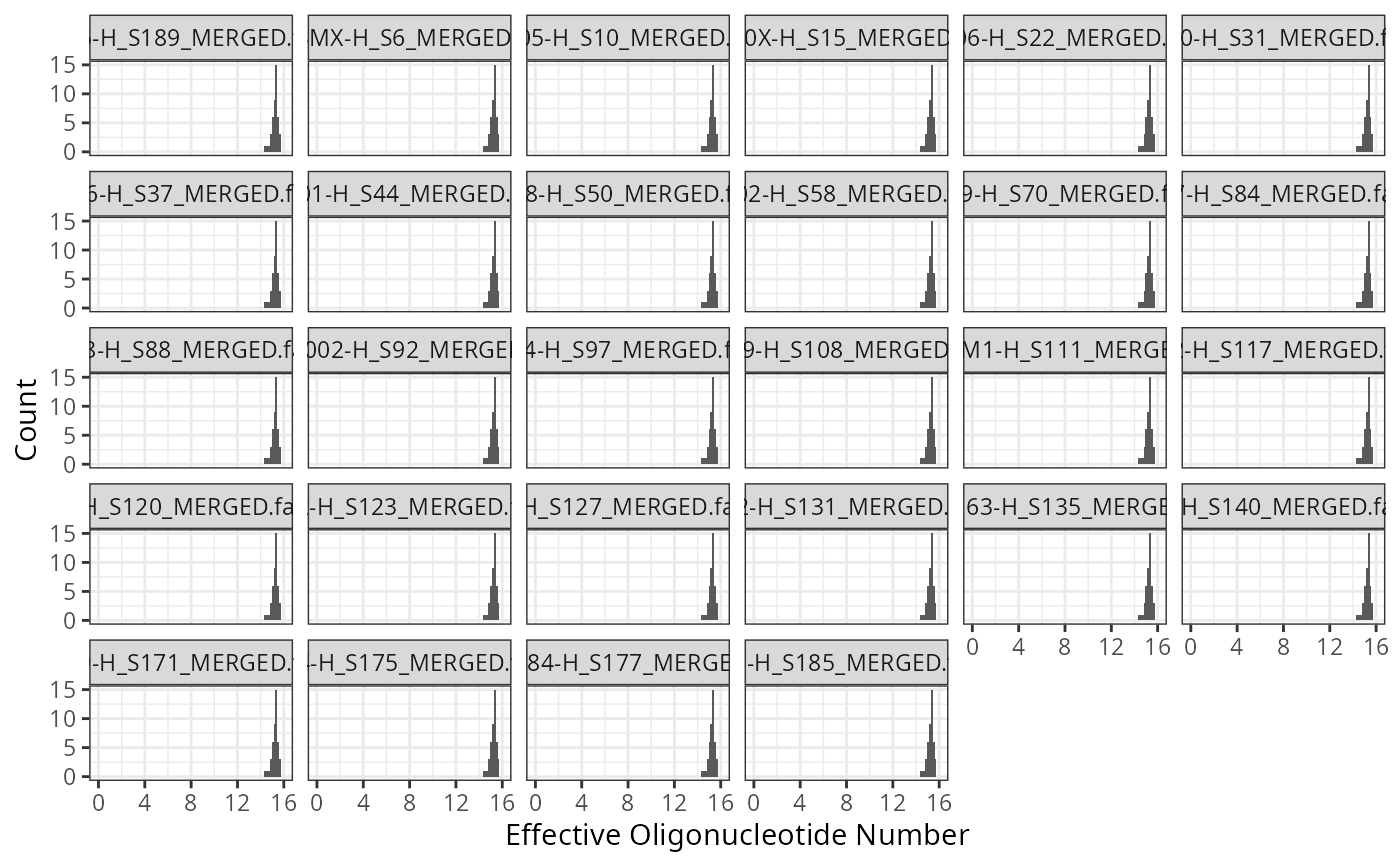Plot kmer complexity of references sequences of a phyloseq object
Source:R/plot_functions.R
plot_complexity_pq.RdBasically a wrapper of dada2::seqComplexity()
Usage
plot_complexity_pq(
physeq,
kmer_size = 2,
window = NULL,
by = 5,
bins = 100,
aggregate = FALSE,
vline_random_kmer = TRUE,
...
)Arguments
- physeq
(required) a
phyloseq-classobject obtained using thephyloseqpackage.- kmer_size
int (default 2) The size of the kmers (or "oligonucleotides" or "words") to use.
- window
(int, default NULL) The width in nucleotides of the moving window. If NULL the whole sequence is used.
- by
(int, default 5) The step size in nucleotides between each moving window tested.
- bins
(int, default 100). The number of bins to use for the histogram.
- aggregate
(logical, default FALSE) If TRUE, compute an aggregate quality profile for all samples
- vline_random_kmer
(logical, default TRUE) If TRUE, add a vertical line at the value for random kmer (equal to 4^kmerSize))
- ...
Arguments passed on to geom_histogram.
Details
This function is mainly a wrapper of the work of others.
Please make a reference to dada2::seqComplexity()
Examples
plot_complexity_pq(subset_samples(data_fungi_mini, Height == "High"),
vline_random_kmer = FALSE
)
 # plot_complexity_pq(subset_samples(data_fungi_mini, Height == "Low"),
# aggregate = FALSE, kmer_size = 4
# )
# plot_complexity_pq(subset_samples(data_fungi, Height == "Low"),
# kmer_size = 4)
# plot_complexity_pq(subset_samples(data_fungi_mini, Height == "Low"),
# aggregate = FALSE, kmer_size = 4
# )
# plot_complexity_pq(subset_samples(data_fungi, Height == "Low"),
# kmer_size = 4)
